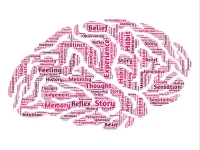The dark ages of the modern era, more commonly known as the COVID-19 lockdown, proved to be a challenging period for many. As inherently social and stimulation-addicted creatures, it is against our nature to stay inside for months at a time. Nonetheless, we emerged to see the light — except the “light” was more like a harsh morning glare after a long, deep slumber. Our brains, as excited as they were, needed a minute to adjust. Adolescents, in particular, felt the brunt of this harsh awakening in the context of neurodevelopment; until the age of 25, the brain develops and undergoes morphological changes that are influenced by external factors. Thus, lockdown had profound effects on adolescents’ behavioral development, notably in social, emotional, and academic contexts.
Adolescence is a critical period of neurodevelopment from the onset of puberty to adulthood. In typical circumstances, the adolescent brain undergoes higher-order cognitive development that leads to behavioral maturity. Peak dopamine levels coupled with increasing social autonomy motivate sensation-seeking and risk-taking behaviors, and consequent exposure to novel and complex social and sensory experiences. In turn, these experiences induce plasticity in brain areas called association cortices, which integrate multimodal sensory information and relay it to the prefrontal cortex for higher-order cognitive processing. Neuropsychological outcomes of this critical period include increased working memory consolidation, attention span, resilience, and social and emotional skills, as well as reduced impulsivity.
Social isolation and online school brought on by the lockdown severely limited opportunities to engage in the novel and complex social and sensory experiences necessary to drive plasticity in adolescent brain areas responsible for higher-order cognition. To reconcile this lack of input with continued development, adolescents’ brains likely merged previous social and sensory experiences with whatever limited social and sensory exposure was available (e.g social media, television, Zoom interactions) and consequently fast-tracked neurodevelopment. A study published in December 2022 described the associated neurobiological implications. It showed that post-lockdown adolescents displayed accelerated brain maturation, which was characterized by decreased cortical thickness and larger hippocampal and amygdala volumes. According to prior research, accelerated brain maturation is also seen in adolescents who have experienced adversity in their childhoods.
On a psychosocial level, post-lockdown adolescents lacked improvement in resilience and social and emotional skills and were thus faced with a myriad of issues in understanding their emotions and connecting with others. Additionally, they exhibit decreased working memory consolidation and attention spans. In an academic setting, this manifests in difficulty retaining information and consequent decreases in performance. Further, adolescents experienced significantly worse mental health issues, including anxiety and depression. In fact, the U.S. emerged from lockdown to a prevailing youth mental health crisis.
“Post-lockdown adolescents showed accelerated brain maturation, characterized by decreased cortical thickness and larger hippocampal and amygdala volume. This is also seen in adolescents who have experienced adversity in their childhoods.”
Although frightening, adolescent neurodevelopment is not a lost cause; there are ways to compensate for accelerated brain maturation and social and emotional developmental delays. First, it is important to get as much exposure to social situations as possible by meeting new people in new environments (e.g. joining clubs, forming study groups, picking up hobbies, traveling). This is especially important for adolescents that missed months of college. As for improving academic performance, engaging multiple senses when learning new information triggers signaling circuitry of the association cortices and engages more of the brain at once. This drives plasticity critical for higher-order cognitive development, including working memory consolidation and increased attention span. A few ways of engaging multiple senses simultaneously include writing with a pencil to feel the texture of graphite on paper, drawing pictures, and studying with peers face-to-face. Generally, taking part in as many novel social and sensory activities as possible will engage the signaling circuitry necessary to develop higher-order brain structures.
“On a psychosocial level, post-lockdown adolescents lacked improvement in resilience and social and emotional skills and were thus faced with a myriad of issues in understanding their emotions and connecting with others.”
Lockdown disconnected the world as we knew it, and the profound effects on the human brain are only beginning to be revealed. To adapt to life after lockdown, it is important to recognize and understand these effects on ourselves and those around us and counteract them; only then will we fully emerge from the shadows of lockdown and learn to face the light without wincing.
Image courtesy of Wikimedia Commons






